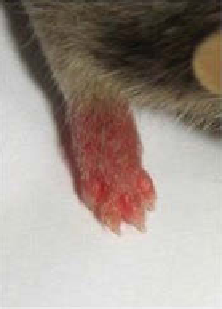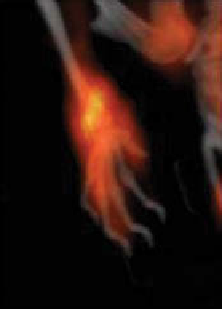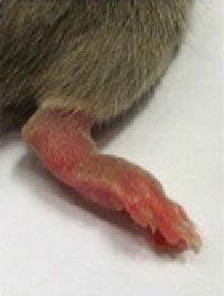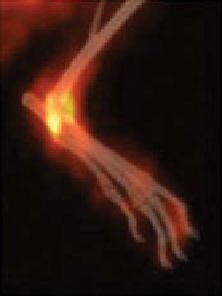Biomedical Engineering Reference
In-Depth Information
PET/CT
Clinic
SR
figure 16.3
Demonstration of arthritis imaging in mice using
18
F-FDG PET/CT. Clinically
evident swelling of the hind paw after intradermal injection of FCA correlates with high uptake
of
18
F-FDG in the ankle of the mouse as seen with PET/CT. (With permission from Ref. [11].)
(
See insert for color representation of the figure.)
)
16.4.2.2 Chemical-Induced Cancer Models
Cancers can be induced in rodent
models by administration of chemical irritants. The advantage of these tumor models
is the repeatable development of tumors in adequate study numbers for statistics.
These tumors are similar to some types of human cancers, but are not generally useful
compared with other models.
The carcinogen
N
-methyl-
N
'-nitro-
N
-nitrosoguanidine (MNNG), when added to
the drinking water, leads to stomach cancer in rats [15], hamsters [16], and dogs [17]
after 25-32 weeks. Intrarectal administration of MNNG causes formation of aberrant
crypt foci followed by adenocarcinoma development by 30 weeks [18]. Intrauterine
administration also induces uterine cancer in rats [19]. The combination of azoxy-
methane and dextran sulfate sodium (AoM-DSS) treatment of mice and rats reliably
induces colorectal cancer with histopathologic and molecular characteristics of human
colorectal cancer [20, 21].






Search WWH ::

Custom Search